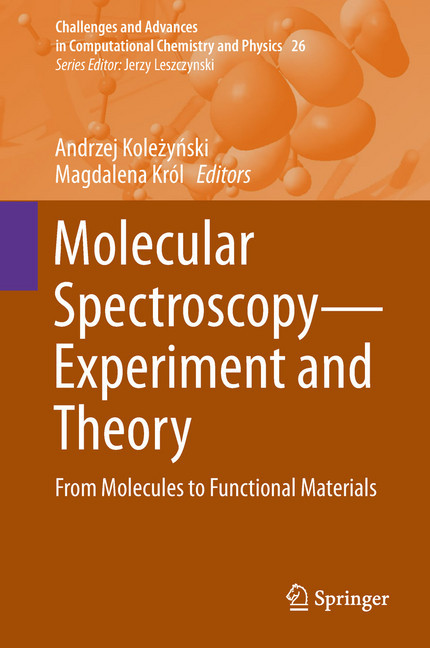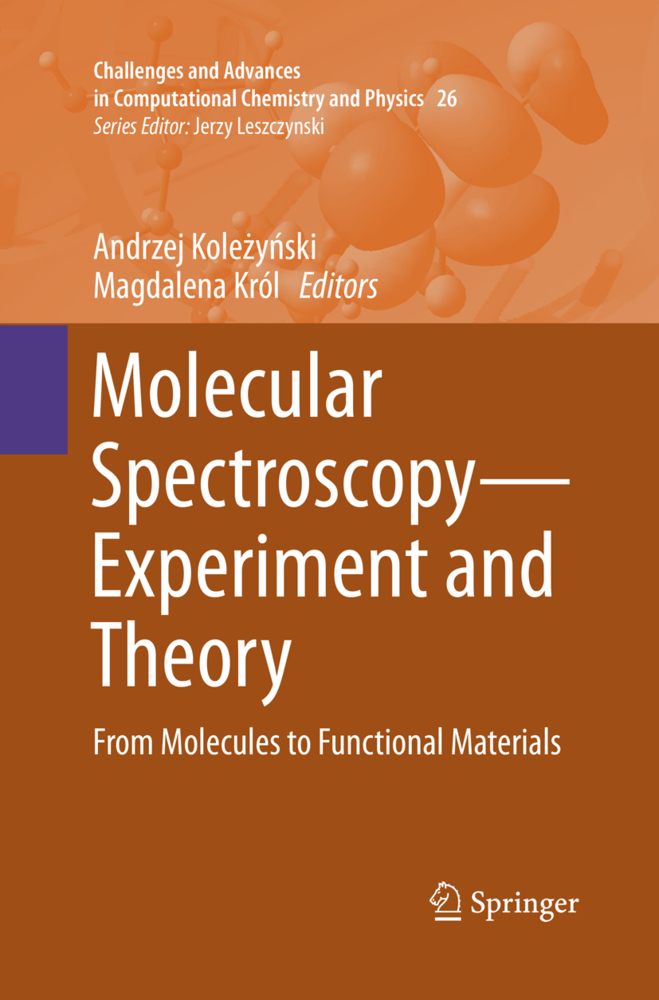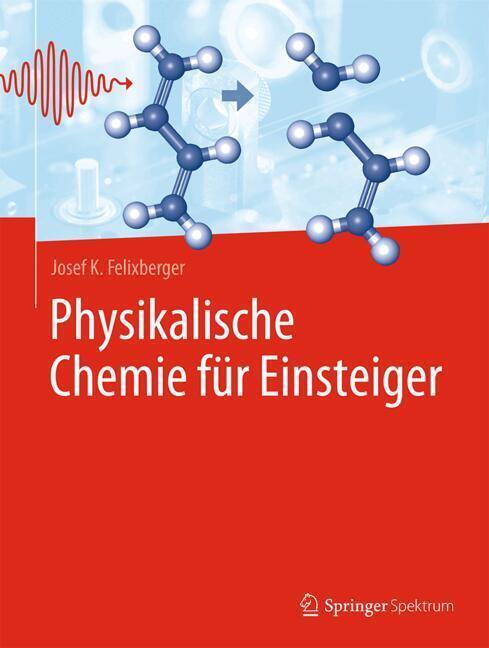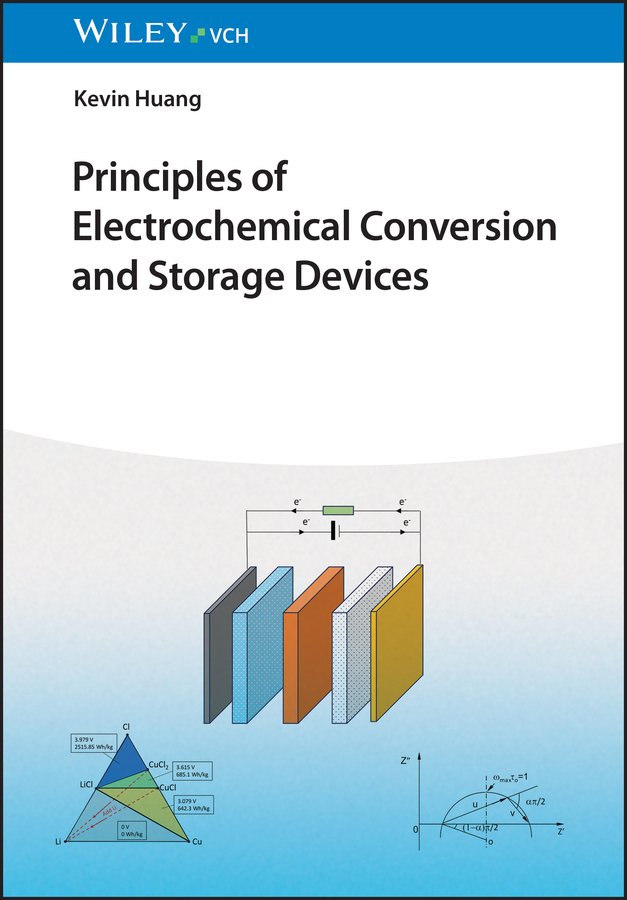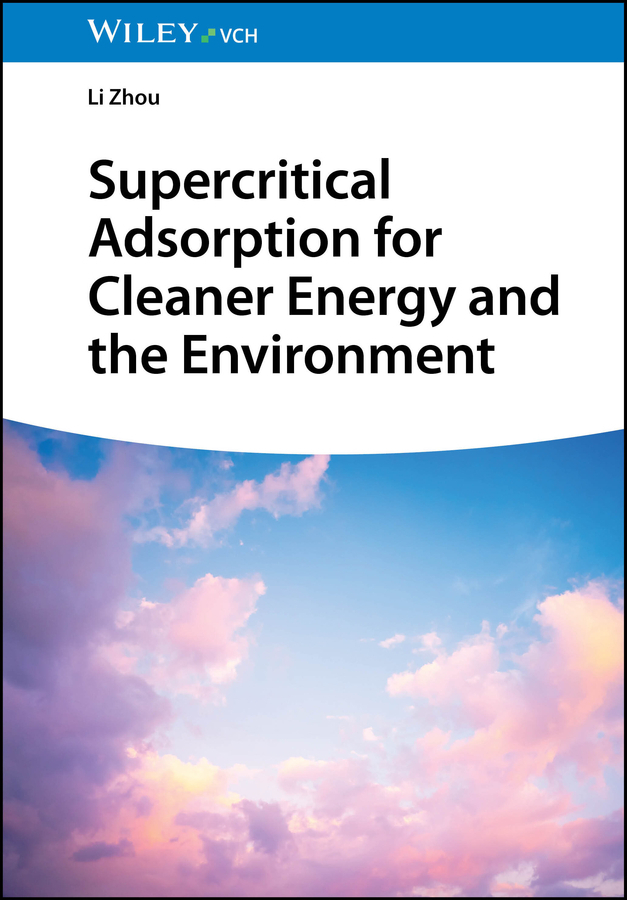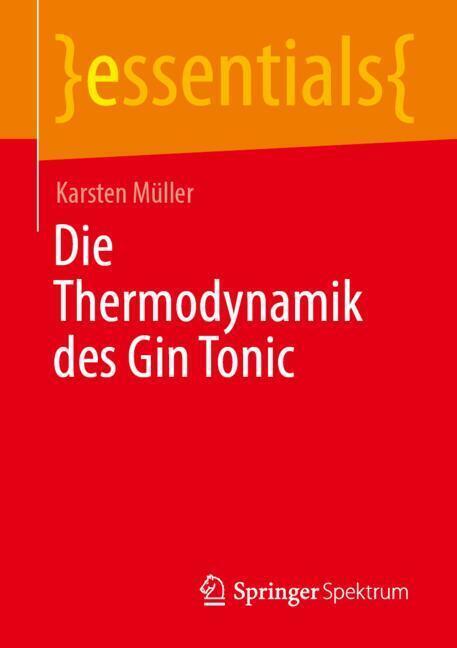Molecular Spectroscopy-Experiment and Theory
From Molecules to Functional Materials
This book reviews various aspects of molecular spectroscopy and its application in materials science, chemistry, physics, medicine, the arts and the earth sciences. Written by an international group of recognized experts, it examines how complementary applications of diverse spectroscopic methods can be used to study the structure and properties of different materials. The chapters cover the whole spectrum of topics related to theoretical and computational methods, as well as the practical application of spectroscopic techniques to study the structure and dynamics of molecular systems, solid-state crystalline and amorphous materials, surfaces and interfaces, and biological systems. As such, the book offers an invaluable resource for all researchers and postgraduate students interested in the latest developments in the theory, experimentation, measurement and application of various advanced spectroscopic methods for the study of materials.
Andrzej Kolezynski is an Associate Professor of Chemistry at AGH University of Science and Technology in Krakow, Poland and has also a PhD in philosophy. In his research, he applies methods of computational chemistry and physics to the periodic and non-periodic solids in order to analyse electronic structure, transport properties and electron density topological properties in relation to structure, chemical bonding and other physical and chemical properties of the compounds of interest. In addition to his research activities, he was a guest editor of several special issues in the Journal of Molecular Structure (2013, 2017), Spectrochimica Acta A (2017) and Vibrational Spectroscopy (2017), a chairman of the organising committees of two international conferences on molecular spectroscopy and served as a member and chair of the expert panels assessing grant applications for two main Polish funding agencies, the National Science Centre and National Centre for Research and Development. Dr. Kolezynski has published more than 40 research papers in international refereed journals and authored a monograph and two book chapters.
Magdalena Król is an Assistant Professor at AGH University of Science and Technology. She received her master's degree in Chemical Technology and PhD in Chemistry from the same university. In her research, she applies various spectroscopic methods to study the structure and properties of aluminosilicate materials, with particular emphasis on materials from the zeolites group. In addition to her research activities, she was a guest editor of the special issue in Vibrational Spectroscopy (2017). Dr. Król is a co-author of over 50 articles (including over 30 papers in international refereed journals) and 5 book chapters.
Andrzej Kolezynski is an Associate Professor of Chemistry at AGH University of Science and Technology in Krakow, Poland and has also a PhD in philosophy. In his research, he applies methods of computational chemistry and physics to the periodic and non-periodic solids in order to analyse electronic structure, transport properties and electron density topological properties in relation to structure, chemical bonding and other physical and chemical properties of the compounds of interest. In addition to his research activities, he was a guest editor of several special issues in the Journal of Molecular Structure (2013, 2017), Spectrochimica Acta A (2017) and Vibrational Spectroscopy (2017), a chairman of the organising committees of two international conferences on molecular spectroscopy and served as a member and chair of the expert panels assessing grant applications for two main Polish funding agencies, the National Science Centre and National Centre for Research and Development. Dr. Kolezynski has published more than 40 research papers in international refereed journals and authored a monograph and two book chapters.
Magdalena Król is an Assistant Professor at AGH University of Science and Technology. She received her master's degree in Chemical Technology and PhD in Chemistry from the same university. In her research, she applies various spectroscopic methods to study the structure and properties of aluminosilicate materials, with particular emphasis on materials from the zeolites group. In addition to her research activities, she was a guest editor of the special issue in Vibrational Spectroscopy (2017). Dr. Król is a co-author of over 50 articles (including over 30 papers in international refereed journals) and 5 book chapters.
1;Preface;6 2;Contents;8 3;Contributors;10 4;1 Computational Methods in Spectroscopy;13 4.1;Abstract;13 4.2;1.1 Introduction;13 4.3;1.2 Theoretical Foundations for Modeling of Real Systems and Processes Studied by Spectroscopic Methods;17 4.3.1;1.2.1 Ab Initio Methods;18 4.3.1.1;1.2.1.1 Schrödinger Equation;18 4.3.1.2;1.2.1.2 Born-Oppenheimer Approximation, Potential Energy Hypersurface;20 4.3.1.3;1.2.1.3 Hartree-Fock Method and Post-HF Extensions;22 4.3.1.4;1.2.1.4 Density Functional Theory;26 4.3.2;1.2.2 Practical Aspects of the Application of Computational Methods in Spectroscopy;34 4.3.2.1;1.2.2.1 Harmonic Approximation-Vibrational Spectroscopy;34 4.3.2.2;1.2.2.2 Time-Dependent DFT;38 4.4;1.3 The Problem of Computational Complexity and the Resulting Necessary Simplifications and Approximations;43 4.4.1;1.3.1 The Size and Complexity of the System;44 4.4.1.1;1.3.1.1 Size of the System: Molecules, Clusters, Amorphous and Periodic Solids;45 4.4.1.2;1.3.1.2 Structure Disorder: Point Defects, Dopants, Vacancies;49 4.4.2;1.3.2 Model Structure Simplifications and Approximations (Theory Level);52 4.5;1.4 Conclusions;53 4.6;References;54 5;2 Scaling Procedures in Vibrational Spectroscopy;61 5.1;Abstract;61 5.2;2.1 Introduction;63 5.3;2.2 Fundamentals;64 5.3.1;2.2.1 Potential Energy Surface;64 5.3.2;2.2.2 One Dimensional Vibrational Problem;66 5.3.3;2.2.3 Wilson-Decius-Cross Method;71 5.4;2.3 Scaling Procedures;74 5.4.1;2.3.1 General Strategy;76 5.4.2;2.3.2 Uniform Scaling;77 5.4.2.1;2.3.2.1 Fundamentals of the Method;77 5.4.2.2;2.3.2.2 Development of US;80 5.4.3;2.3.3 Wavenumber Linear Scaling;84 5.4.4;2.3.4 Scaled Quantum Mechanical Force Field Method;85 5.4.4.1;2.3.4.1 Fundamentals of the Method;85 5.4.4.2;2.3.4.2 Development of SQM;87 5.4.5;2.3.5 Effective Scaling Frequency Factor Method;93 5.4.5.1;2.3.5.1 Fundamentals of the Method;93 5.4.5.2;2.3.5.2 Development of ESFF;96 5.4.6;2.3.6 Comparison of Multi-parameter Scaling Procedures;101 5.4.6.1;2.3.6.1 Quality of the Scaled Frequencies;101 5.4.6.2;2.3.6.2 Numerical Stability;102 5.4.6.3;2.3.6.3 Possible Future Applications;102 5.5;References;103 6;3 Quantum Dot and Fullerene with Organic Chromophores as Electron-Donor-Acceptor Systems;108 6.1;Abstract;108 6.2;3.1 Introduction;109 6.3;3.2 Brief History of Photocells Based on Organic Materials;110 6.4;3.3 Porphyrins and Phthalocyanies;111 6.5;3.4 Phthalocyanine and Porphyrin with Quantum Dots;114 6.6;3.5 Corroles and Fullerene;117 6.7;3.6 Energy and Electron Transfer;121 6.8;3.7 Summarizing;127 6.9;Acknowledgements;128 6.10;References;128 7;4 Material Analysis Using Raman Spectroscopy;134 7.1;Abstract;134 7.2;4.1 Introduction;135 7.3;4.2 Experimental;137 7.4;4.3 Results and Discussion;138 7.5;4.4 Calculation of Young's Modulus;145 7.6;4.5 Conclusions;146 7.7;Acknowledgements;146 7.8;References;146 8;5 Ligand-Core NLO-Phores;149 8.1;Abstract;149 8.2;5.1 Introduction;149 8.3;5.2 Atomically Precise Clusters of Gold and Silver: Synthesis, Characterization, and Optical Properties;151 8.3.1;5.2.1 Atomically Precise Clusters of Gold and Silver;151 8.3.2;5.2.2 Atomically Precise Clusters of Gold and Silver-Synthetic Routes;154 8.3.3;5.2.3 Atomically Precise Clusters of Gold and Silver-Optical Properties;155 8.4;5.3 Atomically Precise Clusters of Gold and Silver as New NLO Chromophores-Background and Design;156 8.5;5.4 Measurement Techniques of Optical Nonlinearities-Two-Photon Absorption/Fluorescence;160 8.6;5.5 Case Studies;162 8.6.1;5.5.1 NLO Emission of Ag29(DHLA)12-Playing with Photons and Colors;162 8.6.2;5.5.2 Bulky Counter-Ions-a Simple Route to Enhance the TPEF Efficiencies;164 8.7;5.6 Conclusions and Outlooks;165 8.8;Acknowledgements;166 8.9;References;166 9;6 Small and Large Molecules Investigated by Raman Spectroscopy;171 9.1;Abstract;171 9.2;6.1 Molecules of Biomedical Importance-Structure and Interactions;171 9.2.1;6.1.1 The Basis of the Raman Optical Activity (ROA);172 9.2.2;6.1.2 ROA Research on Chiral Compounds and Its App
Kolezynski, Andrzej
Król, Magdalena
| ISBN | 9783030013554 |
|---|---|
| Artikelnummer | 9783030013554 |
| Medientyp | E-Book - PDF |
| Copyrightjahr | 2018 |
| Verlag | Springer-Verlag |
| Umfang | 529 Seiten |
| Sprache | Englisch |
| Kopierschutz | Digitales Wasserzeichen |

